Innovations for Educational Facility Design
For Quattrocchi Kwok Architects' new American Canyon High School, a CHPS-verified school in American Canyon, Calif., the campus layout accommodates small groupings of students and teachers in four multiple-discipline "small learning communities," or SLCs. Each houses an assistant principal, a counselor and a mix of science, history, math, and language-arts teachers. "Beyond this core curriculum, American Canyon High School also provides six 'specialized academies,'" says Quattrocchi, in such areas as applied technology, culinary arts, performing arts and global leadership. "Unlike the similarity of design of the SLCs – because of their similar curriculum – the academies are designed for their highly specialized uses."
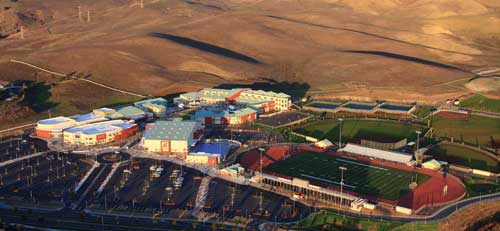 |
Quattrocchi Kwok Architects planned American Canyon School to reflect the "small learning communities," or SLCs, favored by the teaching staff. The energy-efficient school is the first CHPS-verified school in California. Photo courtesy of www.technicalimagery.com / Tim Maloney |
While these kinds of innovative schools rely largely on architectural execution, they also benefit from special technologies that support the space concepts. The use of dry-erase and smart boards, for example, has swept through K-12 education – and the sound of chalk on blackboard is almost a memory, notes Zinder. "Instead of acting as just a piece of A/V equipment that's wheeled to the front of the class when needed, successful classrooms are designed around it, maximizing its value," he explains. "Add wireless and tablet technology and it will revolutionize how students collaborate and present their work."
Gone, too, are the rows of desks and traditional classrooms. In a recent article, the futurist and architect Prakash Nair, with Fielding Nair International in Minneapolis, called the idea "a relic, left over from the Industrial Revolution."
Theme schools. Another important experiment in learning over the last decades has been the creation of magnet, charter and discovery schools – called thematic or intensive schools in Europe – which bring novel opportunities for students to excel. There have also been improved spatial uses, programming and ways to integrate CHPS and LEED prerogatives. Recent examples include the Interdistrict Discovery Magnet School in Bridgeport, Conn., with its science, technology and global education themes. Designed by Svigals + Partners of New Haven, the building features a two-story learning wall embedded with "shapes of dinosaur bones, cassette tapes and other 'fossils'" wrote the Connecticut Post.
Other new theme schools include Minneapolis-based HGA's School of Environmental Studies in Apple Valley, Minn., an "optional high school," organized more like a laboratory and zoo than a secondary school. With communal spaces like a multiple-use commons and forum – and four academic houses overlooking these central spaces with views to a pond, woods and prairie – the school engages students in patterns of activity unlike a traditional high school. In Casper, Wy., the Summit Elementary School, which opened last year, is designed according to museum principles to foster "informal learning," according to an article by Lee H. Skolnick, FAIA, and Jo Ann Secor in the magazine Museum.
Is all this experimenting possibly a passing fad? Not likely, based on ideas espoused by Victoria Bergsagel and the influential group Architects of Achievement. Theme schools are just another way to foster curiosity among students through active, inquiry-based learning and in-depth projects that have relevance to the world beyond the classroom.
Case Studies
Daylighting for Classroom Success
Innovations in glass technology allow architects and designers to incorporate ample use of glass and natural light into today's schools with proven positive effects. Numerous case studies highlight some of the remarkable results of daylighting, including superior math and reading skills improvement for children in well-daylighted classrooms. Architects now have a range of options when specifying high-performance, energy-efficient glass. Today's advanced architectural low-emissivity (low-E) glass offers visible light transmission between 40 and 70 percent, while providing lower reflectivity than was possible in the past, with the added benefit of lower solar heat gain. Insulated glass in double or triple glazed units also offers excellent U-factors to lower heating costs and improve occupant comfort. These products are available in a variety of colors, with emphasis on the neutral range of light gray or green to slightly blue in reflective color. Innovations in glass technology allow architects and designers to incorporate ample use of glass and natural light into today's schools with proven positive effects. Numerous case studies highlight some of the remarkable results of daylighting, including superior math and reading skills improvement for children in well-daylighted classrooms. Daylight is being encouraged as a primary light source for today's school buildings due to the energy-efficient benefits of a well-designed daylit building. Incorporating high-performance glass into educational facility design can reduce the amount of energy used, save thousands in energy-related costs and help earn LEED credits, all while improving the student experience. |
|||
Active Beams Bring Modern Comfort to Historic High School
Creating safe, comfortable spaces for the leaders of tomorrow is our shared responsibility, and air distribution is a key component for creating an environment that fosters learning. When Ogden High School, located in Utah, initiated plans to renovate its existing cafeteria and add a new commons area, a major challenge was to maintain the historic nature of the building while creating a modern and efficient addition. The existing school had no central air distribution system, and due to the school's heritage status it was not possible to conduct the extensive renovations needed to lower the ceilings and install ductwork. By utilizing active beams, a solution that integrated seamlessly into the existing structure while minimizing the mechanical footprint was possible. The renovation and addition embodied LEED design principles and is both energy efficient and extremely low-maintenance. Student comfort and well-being remained a priority, and a beam solution allowed the design team to maintain the historic aesthetic without compromising on the performance goals. In fact, the beam system in the initial phase performed so well that when plans were unveiled to renovate the entire building, the Ogden City School District did not hesitate in selecting beam technology to be used throughout the school. |
|||
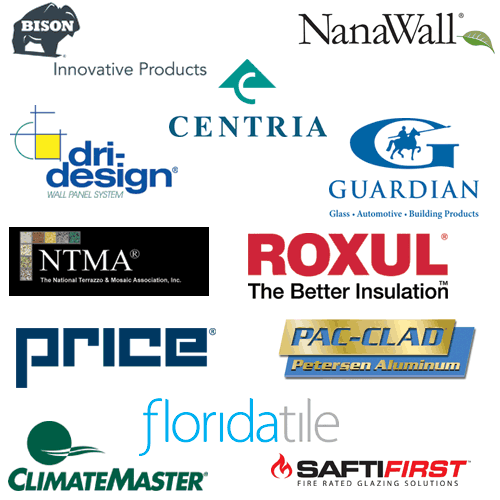
Notice
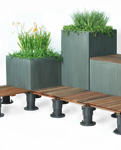
www.BisonIP.com
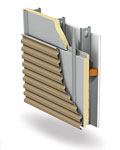
www.buildbetterwalls.com

www.price-hvac.com/sustainable
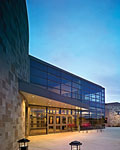
www.sunguardglass.com
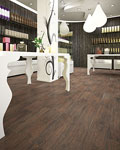
www.floridatile.com
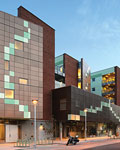
www.dri-design.com
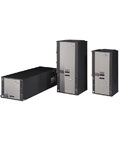
www.climatemaster.com
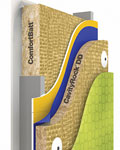
www.roxul.com
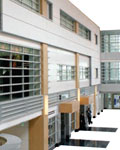
www.safti.com
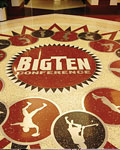
www.ntma.com
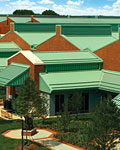
www.PAC-CLAD.com
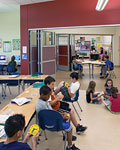
www.Nanawall.com








